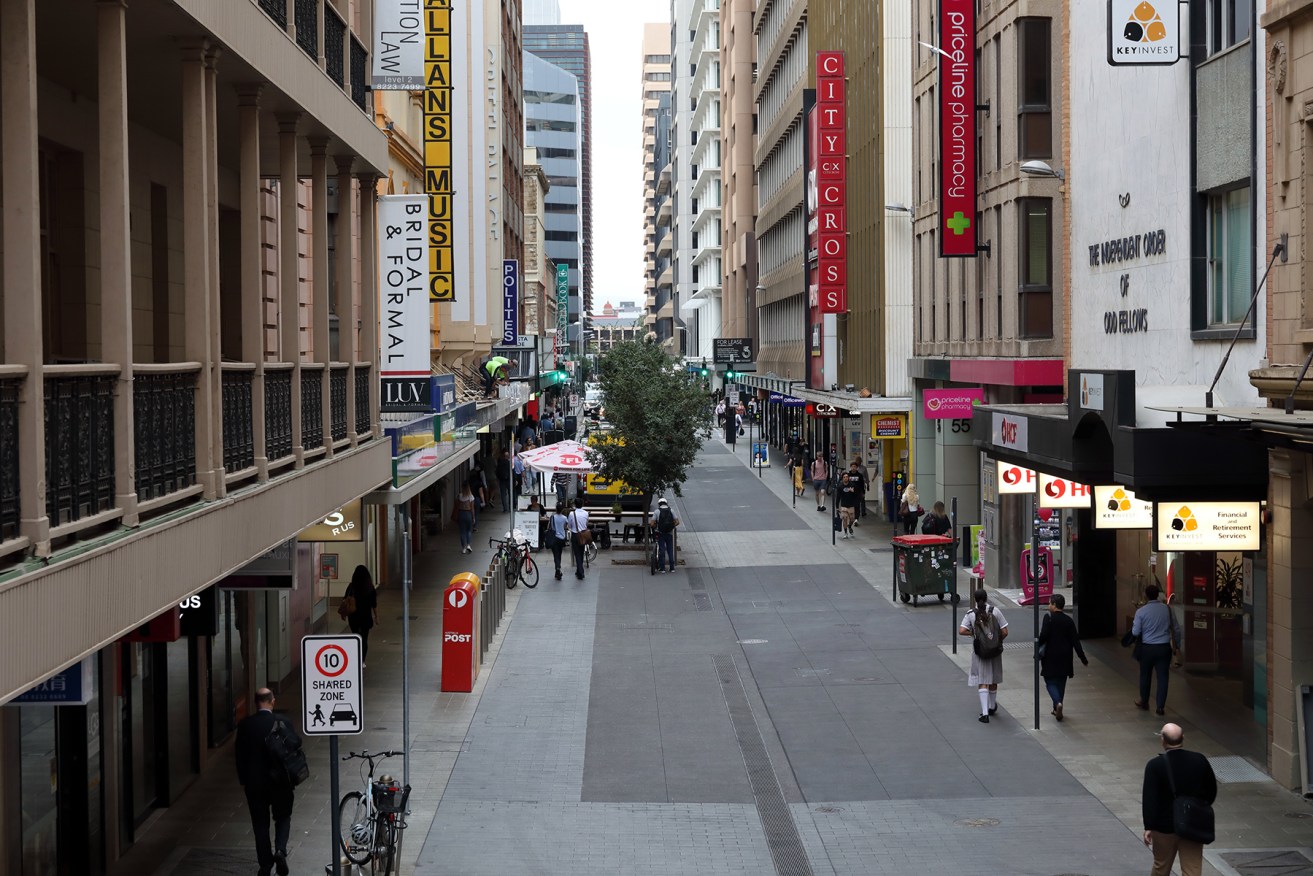Dire warning on COVID hit to SA’s population growth
South Australia’s population growth continued to trail all other states when coronavirus hit, with the pandemic predicted to see numbers go backwards – an outcome that could wreak a “devastating” impact on the broader economy.

A quiet Gawler Place, just off Rundle Mall, in March. Photo: Tony Lewis / InDaily
Australian Bureau of Statistics figures published yesterday show SA’s population grew by around 17,900 to 1,767,200 in the 12 months to March this year – deemed an increase of 1.0 per cent.
That was up on the previous year, when population growth was tracking at 0.9 per cent – but still trailed every other jurisdiction in the country except the Northern Territory on -0.2.
However, SA’s growth was tracking the right way, with the slight increase contrasting with slowing growth in Victoria, Queensland and the ACT.
However, the figures predate the bulk of the COVID-19 impact, which has seen a prolonged lockdown, border closures and international travel curtailed.
A Marshall Government spokesman told InDaily the ABS data showed SA “trending positively”, indicating that “prior to the COVID-19 pandemic, we were making steady progress”.
“The State Government is determined to bridge the gap between our population growth and that of the nation, with a strategy to increase South Australia’s population growth rate to the national average,” they said in a statement.
However, “the COVID-19 pandemic is expected to have a significant effect on overseas migration across Australia, as travel restrictions remain in effect and global mobility is significantly reduced”.
“This will affect population growth in all states and territories, including South Australia,” they said.
Migration agent Mark Glazbrook argues the growth SA was seeing up until March was comprised significantly of international students, which “had risen by about 8000 a year in SA”.
“That’s certainly increased the 12-month data [but] there’s leakage in other areas – less permanent and temporary immigration, but an increase in international students which is masking the problem.”
Glazbrook’s own projection of the COVID impact on population, which saw many migrants leave SA to return home and the tap turned off for new arrivals, was that “ we’d be down by about 14,000 people a year”.
“There’s a lot of backpackers that have left and others that haven’t come here, and a lot of students stuck outside that can’t get back… so instead of being, say, plus-15,000, we’d be minus 14,000,” he said.
“Our population will start to go backwards – so we’ve got to start looking at what the impact of that is on the broader community and economy.”
Glazbrook says research indicates that every skilled migrant creates one corresponding full time job, while it takes four international students to create the equivalent of one FTE.
“So if we start to see a decrease in population growth, that’s a negative impact on demand for goods and services,” he said.
While it’s hoped SA’s status as a coronavirus ‘safe haven’ would bolster its attractiveness, people coming here to escape lockdown restrictions elsewhere are generally doing so temporarily – and that won’t impact the ABS data, which only counts people who have remained in one location for over 12 months.
“In two to three years, the long-term impact to the state economy is going to be challenging,” he said.
“To go from plus-15,000 to zero – or we might actually go backwards – the impact of that is going to be devastating… you’re not going to have to build many new houses if there’s no population growth.”
The Marshall Government says it’s “working closely with the Morrison [federal] Government to work through these challenges to ensure we have access to the globally talented workforce that will continue to help SA’s economy transform and grow”.
The spokesman cited visas granted through SA’s two Designated Area Migration Agreements, although Glazbrook says those have yielded only half a dozen visas thus far.
“Given these challenges, we are accelerating our focus on attracting people to SA from across Australia through the Magnet State project,” the spokesman said.
“This project is based on research from around the world about places that have switched from losing young people to attracting them.
“Australian data shows that the most mobile group – and the group where SA experiences the most significant losses – are 20 to 39 year olds… so the Magnet State project is focused on articulating a clear identity for SA and communicating our opportunities interstate.”




